| Coach | NA |
| Venue | Stade des Alpes |
Grenoble Trivia
Grenoble predictions
Predictions for Grenoble: See upcoming and historic predictions for Grenoble below.
Disclaimer: Past performance does not guarantee future results. Betting involves risk; only wager what you can afford to lose. Always gamble responsibly.
Grenoble Opinions
 Who is the most legendary player in Grenoble's history?
Who is the most legendary player in Grenoble's history?
Grenoble latest transfers
| Date | Player | From | To | Price |
|---|---|---|---|---|
| 2023-01-30 | A. Gersbach | Grenoble | Colorado Rapids | € 300K |
| 2011-01-30 | Yoric Ravet | Grenoble | Saint Etienne | € 600K |
| 2010-08-01 | A. Romao | Grenoble | Lorient | € 1M |
| 2009-08-01 | J. Tadić | Dinamo Zagreb | Grenoble | € 600K |
Ligue 2 standings
| Rank | Team | MP | W | D | L | GF | GA | GD | Pts |
|---|---|---|---|---|---|---|---|---|---|
| 1 |
 Auxerre
Auxerre
|
29 | 15 | 10 | 4 | 53 | 28 | 25 | 55 |
| 2 |
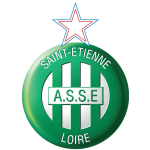 Saint Etienne
Saint Etienne
|
30 | 15 | 6 | 9 | 38 | 23 | 15 | 51 |
| 3 |
 Angers
Angers
|
29 | 15 | 5 | 9 | 42 | 32 | 10 | 50 |
| 4 |
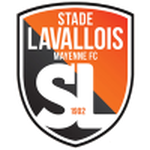 Laval
Laval
|
29 | 13 | 9 | 7 | 35 | 29 | 6 | 48 |
| 5 |
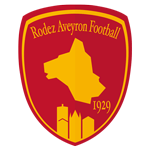 Rodez
Rodez
|
29 | 11 | 10 | 8 | 47 | 40 | 7 | 43 |
| 6 |
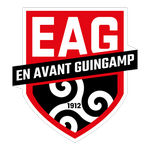 Guingamp
Guingamp
|
29 | 11 | 9 | 9 | 37 | 31 | 6 | 42 |
| 7 |
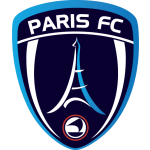 Paris FC
Paris FC
|
29 | 11 | 9 | 9 | 34 | 30 | 4 | 42 |
| 8 |
 Caen
Caen
|
29 | 12 | 6 | 11 | 39 | 37 | 2 | 42 |
| 9 |
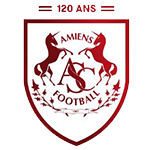 Amiens
Amiens
|
29 | 10 | 12 | 7 | 26 | 27 | -1 | 42 |
| 10 |
 Grenoble
Grenoble
|
29 | 10 | 10 | 9 | 36 | 33 | 3 | 40 |
| 11 |
 PAU
PAU
|
29 | 10 | 10 | 9 | 42 | 42 | 0 | 40 |
| 12 |
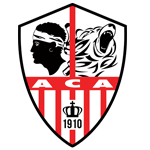 Ajaccio
Ajaccio
|
29 | 10 | 8 | 11 | 28 | 33 | -5 | 38 |
| 13 |
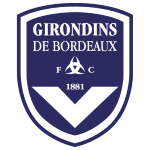 Bordeaux
Bordeaux
|
29 | 10 | 8 | 11 | 32 | 37 | -5 | 37 |
| 14 |
 Dunkerque
Dunkerque
|
29 | 10 | 7 | 12 | 29 | 40 | -11 | 37 |
| 15 |
 Estac Troyes
Estac Troyes
|
29 | 8 | 11 | 10 | 33 | 36 | -3 | 35 |
| 16 |
 Bastia
Bastia
|
29 | 9 | 7 | 13 | 29 | 37 | -8 | 33 |
| 17 |
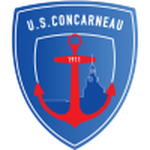 Concarneau
Concarneau
|
29 | 9 | 6 | 14 | 30 | 40 | -10 | 33 |
| 17 |
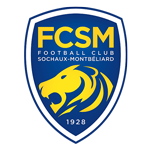 Sochaux
Sochaux
|
0 | 0 | 0 | 0 | 0 | 0 | 0 | 0 |
| 18 |
 Annecy
Annecy
|
29 | 7 | 9 | 13 | 33 | 40 | -7 | 30 |
| 19 |
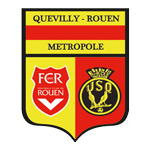 Quevilly
Quevilly
|
29 | 5 | 13 | 11 | 35 | 38 | -3 | 28 |
| 20 |
 Valenciennes
Valenciennes
|
30 | 2 | 11 | 17 | 17 | 42 | -25 | 17 |
About Grenoble
Grenoble Foot 38, often referred to as GF38, is a professional football club based in Grenoble, a city in southeastern France. The club was established in 1892, making it one of the oldest football clubs in France. Despite its long history, Grenoble has spent most of its existence in the lower tiers of French football, but it has had periods of success and has produced some notable players.
The club was originally known as Football Club de Grenoble, but it has undergone several name changes over the years. In 1997, it adopted its current name, Grenoble Foot 38, which reflects the club's location in the Isère department, which is numbered 38 in the French administrative system.
Grenoble's home ground is the Stade des Alpes, a modern stadium with a capacity of over 20,000 spectators. The stadium, which is also used for rugby matches, was opened in 2008 and is known for its distinctive, undulating roof.
Grenoble's most successful period came in the late 2000s when the club spent two seasons in Ligue 1, the top tier of French football. However, financial problems led to a rapid decline, and the club was relegated to the fifth tier in 2011. Despite these setbacks, Grenoble has shown resilience and has gradually climbed back up the football pyramid.
The club's colours are blue and white, and its crest features a stylized image of the mountains that surround Grenoble. The club's mascot, a chamois named Fufu, is a popular figure at home matches.
Over the years, Grenoble has produced several players who have gone on to have successful careers at higher levels. These include Olivier Giroud, who started his professional career at Grenoble and has since played for clubs like Arsenal and Chelsea and won the World Cup with France in 2018.
Despite its ups and downs, Grenoble Foot 38 remains a beloved institution in its home city. The club's passionate fans, known as the "Alpins", are known for their loyalty and their colourful support. While Grenoble may not have the resources of some of the bigger clubs in French football, it has a proud tradition and a strong community spirit, which have helped it to overcome many challenges.
In recent years, Grenoble has focused on developing its youth academy and building a sustainable future. The club's aim is to establish itself as a regular presence in Ligue 2, the second tier of French football, and to continue producing talented players who can succeed at the highest levels.
In conclusion, Grenoble Foot 38 is a historic club with a rich heritage and a strong connection to its local community. Despite the challenges it has faced, it remains a vital part of the football landscape in France.















